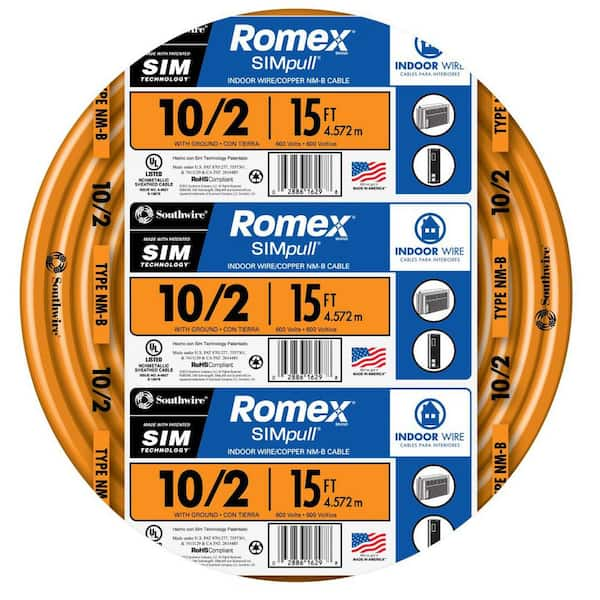
Covers 15 ft.
$74.00
($4.93 /ft.)

Pay $49.00 after $25 OFF your total qualifying purchase upon opening a new card. 
Apply for a Home Depot Consumer Card- #10 AWG residential wiring for outlets, switches and other loads
- Copper (CU) Conductors
- 10 gauge has Orange color-coded jacket for size identification
- View More Details
Free & Easy Returns In Store or Online
Return this item within 90 days of purchase.























